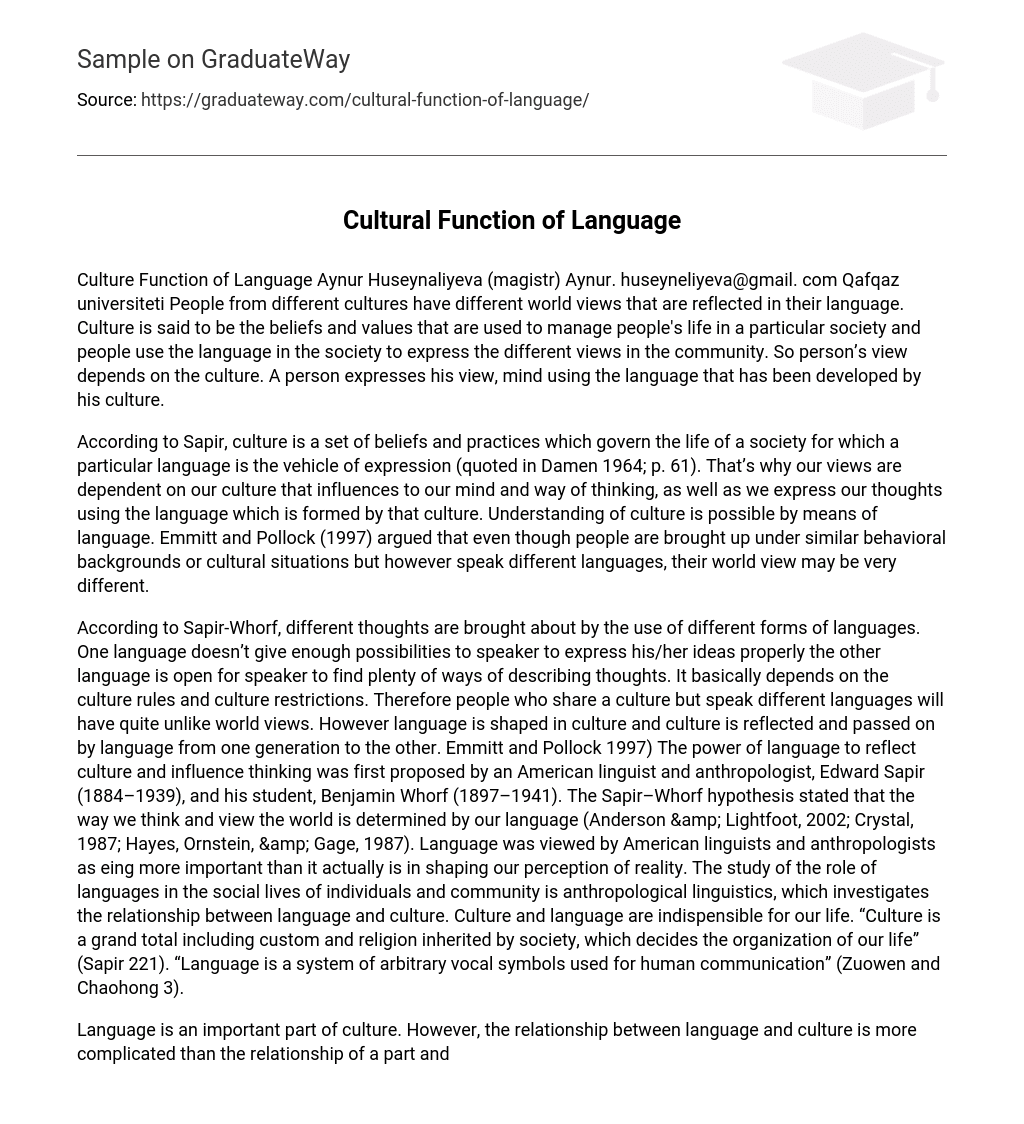People from diverse cultures possess varying worldviews that are manifested in their language. Culture encompasses the beliefs and values utilized to govern individuals’ lives within a specific society, while language serves as the means by which individuals communicate their distinct perspectives within the community. Consequently, an individual’s cultural background influences their outlook, prompting them to employ the linguistic framework developed by their culture when expressing their thoughts and opinions.
Sapir (as cited in Damen, 1964; p.61) defines culture as a set of beliefs and practices that guide a society’s life, with language being the tool for expressing this culture. Our cultural background heavily impacts our viewpoints, thinking patterns, and the language we employ for conveying ideas. Language acts as a pathway to comprehend culture. Emmitt and Pollock (1997) further propose that individuals sharing similar cultural backgrounds but speaking different languages may possess unique worldviews.
According to the Sapir-Whorf hypothesis, different languages lead to different thoughts. One language provides limited ways to express ideas, while another offers a variety of options for describing thoughts. The variation in language is influenced by cultural rules and restrictions. Therefore, individuals who share the same culture but speak different languages have contrasting worldviews. Language is shaped by culture and passed on through generations, reflecting cultural values (Emmitt and Pollock, 1997).
This idea that language reflects culture and influences thinking was first introduced by American linguist Edward Sapir (1884–1939) and his student Benjamin Whorf (1897–1941). The Sapir-Whorf hypothesis states that our language dictates how we think and perceive the world (Anderson & Lightfoot, 2002; Crystal, 1987; Hayes, Ornstein & Gage, 1987). However, American linguists and anthropologists may have overemphasized the influence of language on shaping our understanding of reality.
The study of how languages impact social lives falls under anthropological linguistics which explores the relationship between language and culture. Culture and language are essential aspects of our lives.According to Sapir (221), culture encompasses customs and religion that are passed down by society, shaping the way we live. Zuowen and Chaohong (3) define language as a system of vocal symbols used for human communication.
The connection between language and culture is deeply interconnected. According to Kluckhohn (as cited in Damen 1944; p. 26), language is a crucial component of human culture. Similarly, Sapir (as cited in Damen 1964; p. 70) views language as a symbolic tool for conveying culture. Therefore, language stems from culture, and culture is exclusively transmitted through language across generations.
In her article, “The relationship between culture and language,” Wenying Jiang presents three metaphors to illustrate the connection between culture and language. The author utilizes a survey of word associations to investigate cultural content embedded within specific language items. These metaphors serve as a representation of the author’s comprehension of the correlation between language and culture. The initial metaphor likens language and culture to a living organism, where language represents flesh while culture symbolizes blood. Devoid of culture, language would lack vitality; similarly, without language, culture would be devoid of structure. The second metaphor explores…
From a communicative view: Communication can be compared to swimming, language is the skill needed to swim, and culture is like water. Without language, communication would be limited and shallow; without culture, there would be no communication at all.
From a pragmatic view: Communication is similar to transportation, language acts as the vehicle, and culture is like the traffic light. Language facilitates and speeds up communication, while culture regulates and sometimes facilitates or obstructs it. In summary, language and culture, despite their differences, are interconnected.
It is impossible to envision any culture without language. Language can be seen as the verbal manifestation of culture and serves as a means for culture to exist. It is employed to preserve and transmit culture and its connections. Language is strongly influenced by culture, as cultures develop new concepts they create linguistic elements to express them. Every culture must possess at least one language which functions as a unique medium for communication, conveying its defining ideas, customs, beliefs, among other things, from one member of the culture to another.





